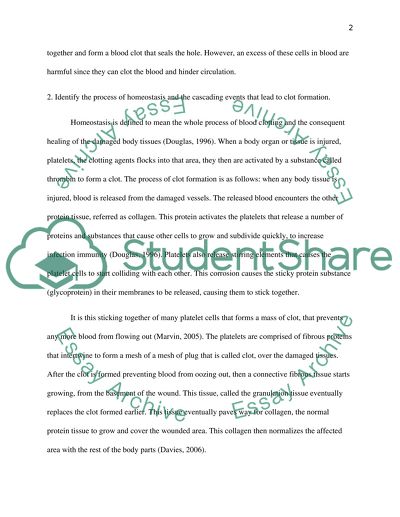Types of Blood Cells and Process of Homeostasis leading to clot Essay. Retrieved from https://studentshare.org/health-sciences-medicine/1588291-types-of-blood-cells-and-process-of-homeostasis-leading-to-clot-formation
Types of Blood Cells and Process of Homeostasis Leading to Clot Essay. https://studentshare.org/health-sciences-medicine/1588291-types-of-blood-cells-and-process-of-homeostasis-leading-to-clot-formation.


